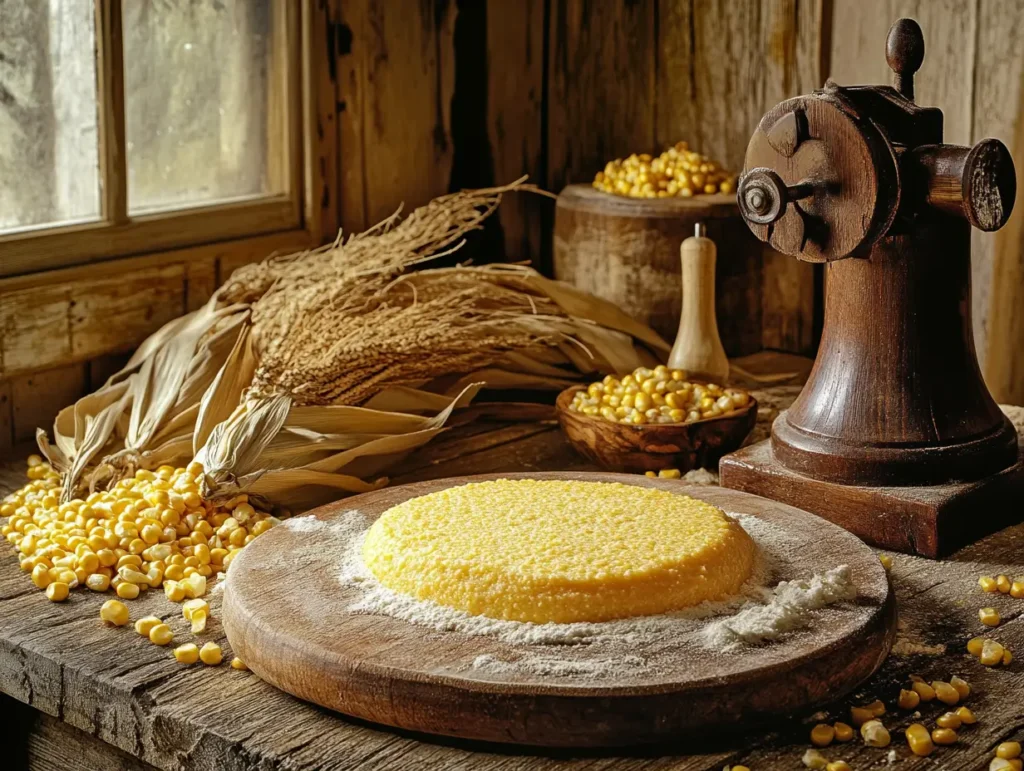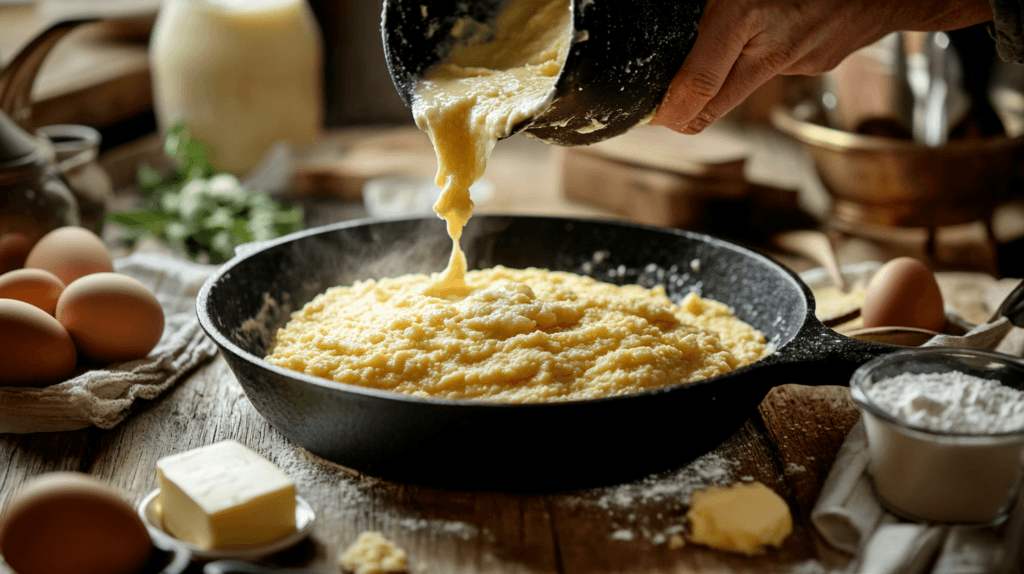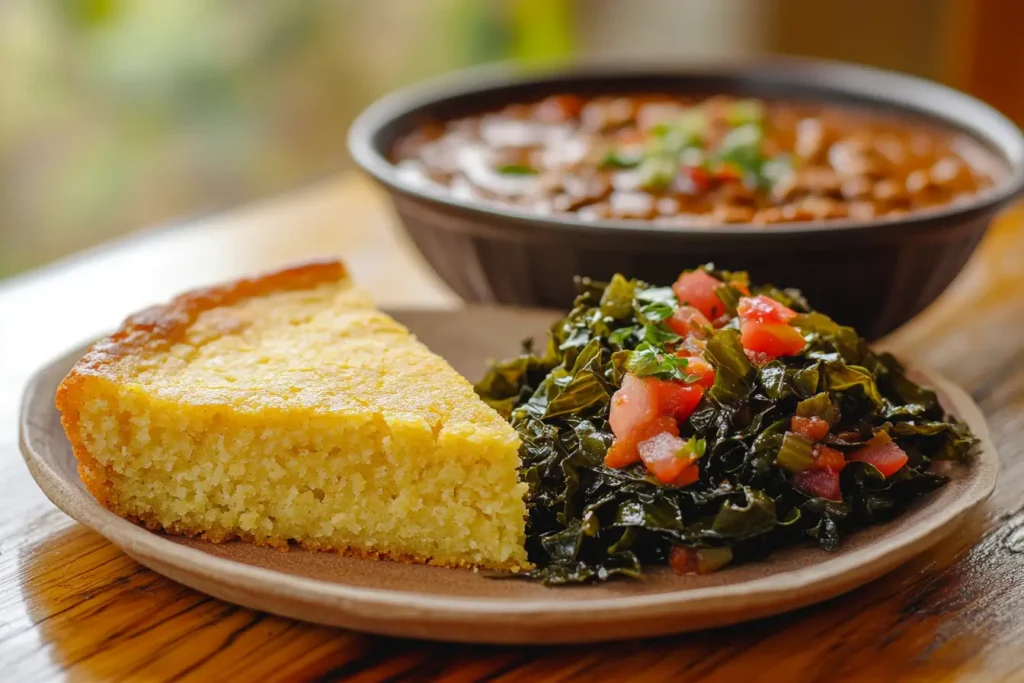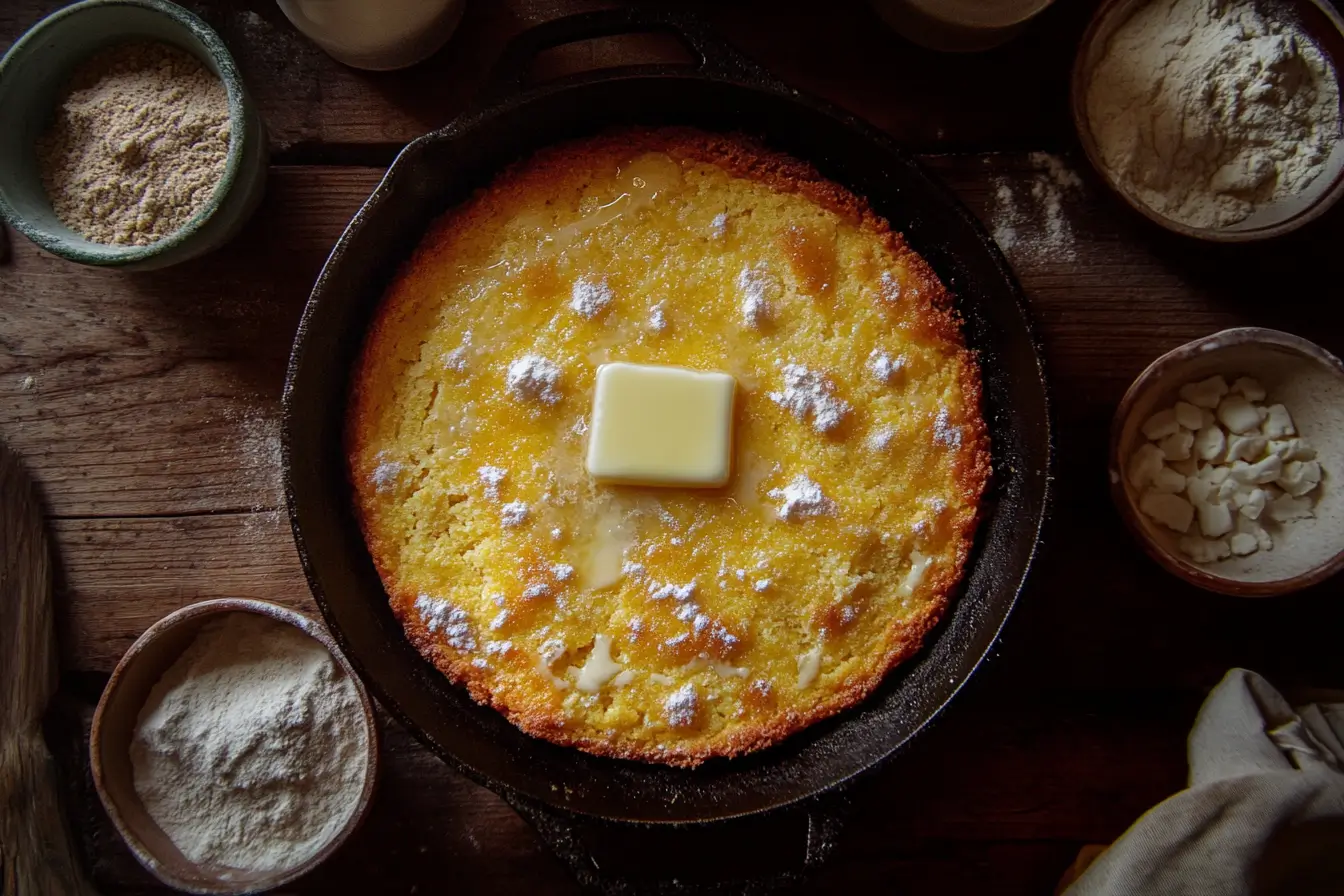Cornbread sparks debates among food lovers, and one common question is, “Why is Southern cornbread not sweet?” This savory dish has roots in history and tradition. Understanding why Southern cornbread isn’t sweet provides insight into the regional culture and cooking practices that make it unique.
In this article, we’ll unravel the fascinating tradition of Southern-style unsweetened cornbread. We’ll explore its historical roots, the role of cornmeal quality, and the unique cooking techniques that give this dish its distinct identity. You’ll also learn how Southern cornbread contrasts with Northern variations and discover modern adaptations that preserve its authenticity. Let’s dive into this flavorful journey.
The Tradition of Unsweetened Cornbread
If you’ve ever wondered, “Why is Southern cornbread not sweet?” the answer lies in its purpose as a versatile side dish. Southern cooks prioritized savory flavors to ensure the cornbread complemented hearty meals. This focus on savoriness answers the ongoing debate about why Southern cornbread is not sweet.
The tradition of unsweetened cornbread can be traced back to early Southern kitchens where the focus was on sustenance and resourcefulness. Cornbread needed to be filling, affordable, and adaptable to a variety of meals. By avoiding sugar, Southern cooks ensured their cornbread wouldn’t overpower the rich, savory flavors of their main dishes.
Another reason sugar is left out is cultural identity. Southern cooking emphasizes preserving the natural flavors of ingredients. In this case, the stone-ground cornmeal, with its nutty and earthy taste, shines on its own without added sweetness. This minimalist approach to cooking is a hallmark of the Southern culinary tradition.
Historical Roots of Cornbread in the South
The history of cornbread helps explain why Southern cornbread isn’t sweet. In the South, cornbread evolved from simple corn pone, made without sugar, because the focus was on sustenance. The question of why Southern cornbread is not sweet becomes clear when considering the region’s cooking priorities: flavor over sweetness.
In the South, cornmeal became a kitchen essential due to the region’s climate, which was better suited for growing corn than wheat. Cornbread became a daily staple for all social classes because of its affordability and versatility. Unlike wheat-based bread, cornbread didn’t require yeast or long rising times, making it a quick and practical option for busy households.
However, the quality of cornmeal changed during the Industrial Revolution. Traditional stone mills, which preserved the natural oils and flavors of the corn, were replaced by roller mills. This new milling process produced finer, more uniform cornmeal but stripped it of its rich taste and texture. In response, some cooks began adding sugar to compensate for the loss of flavor. Despite this shift, Southern cooks remained loyal to their roots, continuing to make unsweetened cornbread with high-quality stone-ground cornmeal whenever possible.
Dive deeper into the cultural reasons for sugar-free Southern cornbread to understand how this tradition has persisted despite modern changes in ingredients and milling techniques.
For a closer look at how milling techniques have shaped this iconic dish, check out What Makes a Southern Cornbread?.

Cornmeal Quality and Milling Methods
The key to authentic Southern-style cornbread lies in the quality of the cornmeal. Traditional stone-ground cornmeal is coarse and retains the natural oils of the corn, giving the bread a robust flavor and crumbly texture. This type of cornmeal was historically produced by water-powered mills and used field-ripened corn, which naturally contained a subtle sweetness.
In contrast, modern roller-milled cornmeal is finer and lacks the depth of flavor found in stone-ground varieties. The difference in milling methods greatly affects the taste and texture of the final product, with stone-ground cornmeal providing the hearty, rustic quality that defines Southern cornbread.
| Aspect | Stone-Ground Cornmeal | Roller-Milled Cornmeal |
|---|---|---|
| Texture | Coarse, natural graininess | Fine and uniform |
| Flavor | Rich, nutty, slightly sweet | Mild, less pronounced |
| Nutritional Content | Retains oils and nutrients | Loses natural oils and some nutrients |
| Best for | Traditional Southern recipes | Modern sweetened recipes |
To ensure your cornbread stays true to its Southern roots, choose stone-ground cornmeal whenever possible. This will not only enhance the flavor but also preserve the authentic texture that defines unsweetened cornbread. Understand the key elements that define authentic Southern cornbread by focusing on ingredient quality.
Southern Cooking Techniques for Unsweetened Cornbread
One of the most iconic aspects of Southern-style cornbread is its preparation in a cast-iron skillet. The skillet is more than just a cooking vessel; it’s a tool that transforms the cornbread by creating a golden, crispy crust that contrasts beautifully with the soft interior.
Want to try your hand at making a traditional version? Visit our Southern Cornbread Recipe for a step-by-step guide.

Steps to Make Perfect Southern Cornbread
- Preheat the Skillet: Place the cast-iron skillet in the oven as it preheats to 400°F. This ensures the batter sizzles on contact, creating a crust that’s both crispy and flavorful.
- Combine Ingredients: Mix stone-ground cornmeal, buttermilk, baking soda, and eggs in a bowl. Avoid overmixing to maintain a light texture.
- Add Melted Fat: Use bacon grease or butter for added richness and to prevent sticking.
- Pour and Bake: Pour the batter into the hot skillet and bake for 20-25 minutes, or until the top is golden brown.
Learn how to prepare a classic Southern cornbread step by step for more detailed instructions and tips.
The use of buttermilk is another Southern tradition that adds tanginess and helps create a tender crumb. Combined with the natural flavor of stone-ground cornmeal, it results in a bread that’s simple yet satisfying.
Comparing Northern and Southern Cornbread
The North-South divide in cornbread is more than just a culinary difference; it reflects regional preferences and historical influences.
| Feature | Northern Cornbread | Southern Cornbread |
|---|---|---|
| Texture | Soft, cake-like | Crumbly, dense |
| Sweetness | Significant (sugar, honey, molasses) | Minimal or none |
| Cooking Method | Baked in pans | Cooked in cast-iron skillets |
Northern cornbread is often sweetened to the point where it resembles cake, making it suitable as a standalone dish or dessert. In contrast, Southern cornbread is savory, allowing it to complement a wide range of dishes. Explore innovative variations like protein-packed cornbread recipes to see how regional preferences influence modern adaptations.
Modern Adaptations and Variations
While traditional Southern cornbread remains a favorite, modern variations have emerged to suit diverse tastes. High-protein versions, for instance, have gained popularity for their nutritional benefits. If you’re looking to experiment, explore The Ultimate Guide to Protein Cornbread.
Pairing Southern cornbread with creative sides can also elevate your meal. Consider unique options like pumpkin leaves, a Southern-inspired side dish rich in nutrients. For ideas, visit The Ultimate Guide to Pumpkin Leaves: Benefits, Uses, and Preparation.
Popular Variations
- Gluten-Free Cornbread: Use almond or coconut flour to replace wheat flour for those with gluten sensitivities.
- Spicy Cornbread: Add diced jalapeños or red pepper flakes for a kick of heat.
- Cheesy Cornbread: Mix in shredded cheddar or Parmesan for a rich, savory twist.
- Dairy-Free Cornbread: Substitute buttermilk with almond milk and a splash of vinegar for a dairy-free alternative.
These adaptations show that Southern cornbread can evolve while still honoring its roots.
Cultural Significance of Southern Cornbread
Southern-style cornbread is more than a recipe; it’s a cultural symbol of hospitality, resilience, and simplicity. Often served at family gatherings, church potlucks, and holiday feasts, cornbread plays a central role in Southern meals.
Its neutral flavor makes it an excellent pairing for dishes like fried chicken, collard greens, and barbecue. By acting as a versatile base, cornbread brings balance to meals rich in flavor and spice. Interested in unique pairings? Pair your cornbread with unique Southern-inspired sides like pumpkin leaves to add a creative touch to your table.
For a deeper exploration of the sweet-versus-savory debate, read Why Southerners Do Not Put Sugar in Cornbread.
Recipes and Serving Suggestions

Traditional Southern Cornbread Recipe
Ingredients:
- 2 cups stone-ground cornmeal
- 1 teaspoon baking soda
- 1 ½ cups buttermilk
- 2 large eggs
- 2 tablespoons melted bacon grease or butter
Instructions:
- Preheat a cast-iron skillet in a 400°F oven.
- In a large bowl, combine the cornmeal and baking soda.
- Whisk the buttermilk and eggs in a separate bowl, then add to the dry ingredients. Stir gently.
- Pour the batter into the hot skillet and bake for 20-25 minutes.
Serve warm with butter or alongside savory dishes like chili, gumbo, or barbecue.
Conclusion
Southern-style unsweetened cornbread remains a cherished tradition that reflects the history, culture, and flavors of the South. Its simplicity and versatility make it a beloved dish that has stood the test of time. Whether you’re trying it for the first time or revisiting a family recipe, this cornbread offers a delicious glimpse into Southern cooking at its best.
So, why is Southern cornbread not sweet? It’s all about preserving tradition, emphasizing natural flavors, and pairing well with Southern dishes.
FAQs
Is Southern cornbread supposed to be sweet?
No, traditional Southern cornbread is savory. The focus is on enhancing the natural flavors of the cornmeal without adding sugar.
Is cornbread not supposed to be sweet?
It depends on the region. Southern cornbread is savory, while Northern cornbread often includes sugar, honey, or molasses for sweetness.
Why is Northern cornbread sweet?
Northern cornbread includes sweeteners to complement its cake-like texture and is often served as a dessert or standalone dish.
Why isn’t cornmeal sweet?
Cornmeal, especially stone-ground varieties, has a natural nuttiness and slight sweetness from field-ripened corn, but it’s not inherently sugary.

